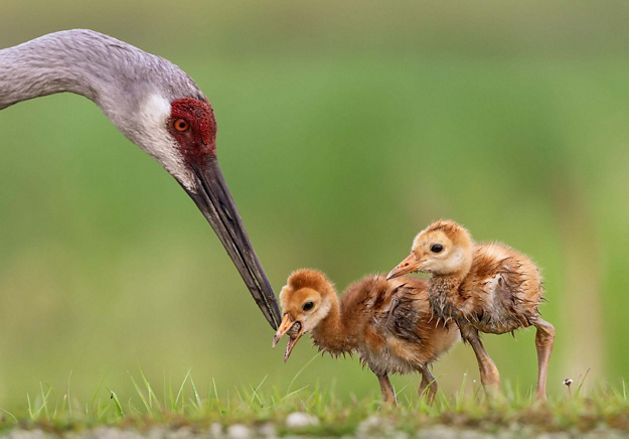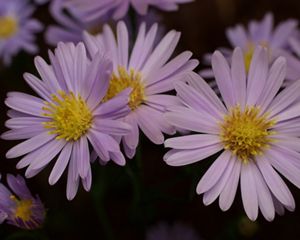A Little Management On The Prairie
Ongoing protection and restoration efforts expand prairie habitat in Ohio.
When The Nature Conservancy launched its mission to conserve Ohio’s wildlife more than 50 years ago, our first act was to buy a 42-acre patch of hardscrabble prairie in Adams County. Lynx Prairie was identified in 1959 as one of Ohio's best remaining examples of the grassland openings known as cedar barrens prairie. Ohio is part of a vast and shifting border where the great hardwood forests of the East meet the vast Midwestern grasslands. Historically, this part of the state was mostly forest, but dotted with pockets of prairie.
Prairie Distribution in Ohio
The E. Lucy Braun Lynx Prairie Preserve eventually grew into TNC's 20,000-acre Edge of Appalachia Preserve System in southern Ohio. Today, there are more than 100 of these prairie openings within “The Edge.”
Prairie landscapes occur elsewhere in Ohio. They grow in places forests don’t prefer–on dry, rocky cliffs and promontories like those in Adams County, or in places that are either too wet or too dry for trees to thrive.
These include the tallgrass prairie in places like the Darby Plains of central Ohio and the Lake Plain Oak Openings of northwest Ohio, where the sandy soils of ancient lake ridges create a mix of wet and dry prairie punctuated with stands of scattered oaks.
Biodiversity, Greenhouse Gas Reduction and Filtration
Pioneers often referred to grasslands as “barrens” because they believed the soil was too poor to support trees. But prairies are productive ecosystems and harbor some of the best plant and animal diversity in Ohio. TNC's Kitty Todd Nature Preserve in the Oak Openings Region competes with the Edge of Appalachia for the most rare plant species in Ohio–and both have substantial prairie property.
These rare ecosystems provide other benefits as well. Deeply rooted prairie plants prevent erosion, keeping local streams clean. They soak up rain and minimize flooding. And they store more carbon dioxide per acre than just about any other plant community, reducing the amount of greenhouse gas in the atmosphere.
Species Found on the Prairie




Protection and Restoration
But, as is the case throughout North America, most of Ohio’s prairies were plowed under more than a century ago. Until conservation efforts began in the 1950s, what was left could be found mostly along railroad rights of way, in pioneer cemeteries and on soils too poor to farm.
Since our first project at Lynx, TNC has protected hundreds of acres of prairie land. But these landscapes need management, or they eventually will be overtaken by forest. Before Europeans settled the area, forests were kept at bay by periodic fires or the browsing and grazing of large herbivores, like bison or elk. Today, we burn prairies to keep them in grassland.
In the Lake Plain Oak Openings Region–a savanna that once covered 1,300 square miles over six counties of Ohio and Michigan–conservation efforts on public lands and nature preserves have protected 13,000 acres of Oak Openings habitat in Ohio and about 5,000 acres in Michigan.
The vast majority of the Oak Openings region is privately owned, and so private landowner efforts are critical. More than 250 landowners in Ohio and Michigan have enrolled in TNC's Landowner Registry, which recognizes and assists private landowners in improving these habitats.
Since so few acres of the Oak Openings communities remain, even small increases in quality or quantity can make a significant difference in the health of the species that depend on prairie habitat.
On a statewide basis, TNC is working to encourage the use of controlled burns on grassland and in forested areas through the Ohio Prescribed Fire Council which provides an avenue for professionals to come together to help develop policies and recommendations that ensure the safe and effective use of fire as a land management tool.
Through additional land protection, partnerships with private landowners and the increased use of fire as a management tool, TNC is working to ensure that future generations of Ohioans will experience prairie as part of Ohio’s natural world.
We need your help now to protect and restore these vital natural areas long-term, and ensure others have a chance to experience them. Give Now.

Looking for More Hope?
Enjoy more inspirational stories delivered monthly right to your inbox. Discover more conservation success stories.
.JPG?crop=0%2C231%2C4000%2C2200&wid=1300&hei=715&scl=3.076923076923077)


